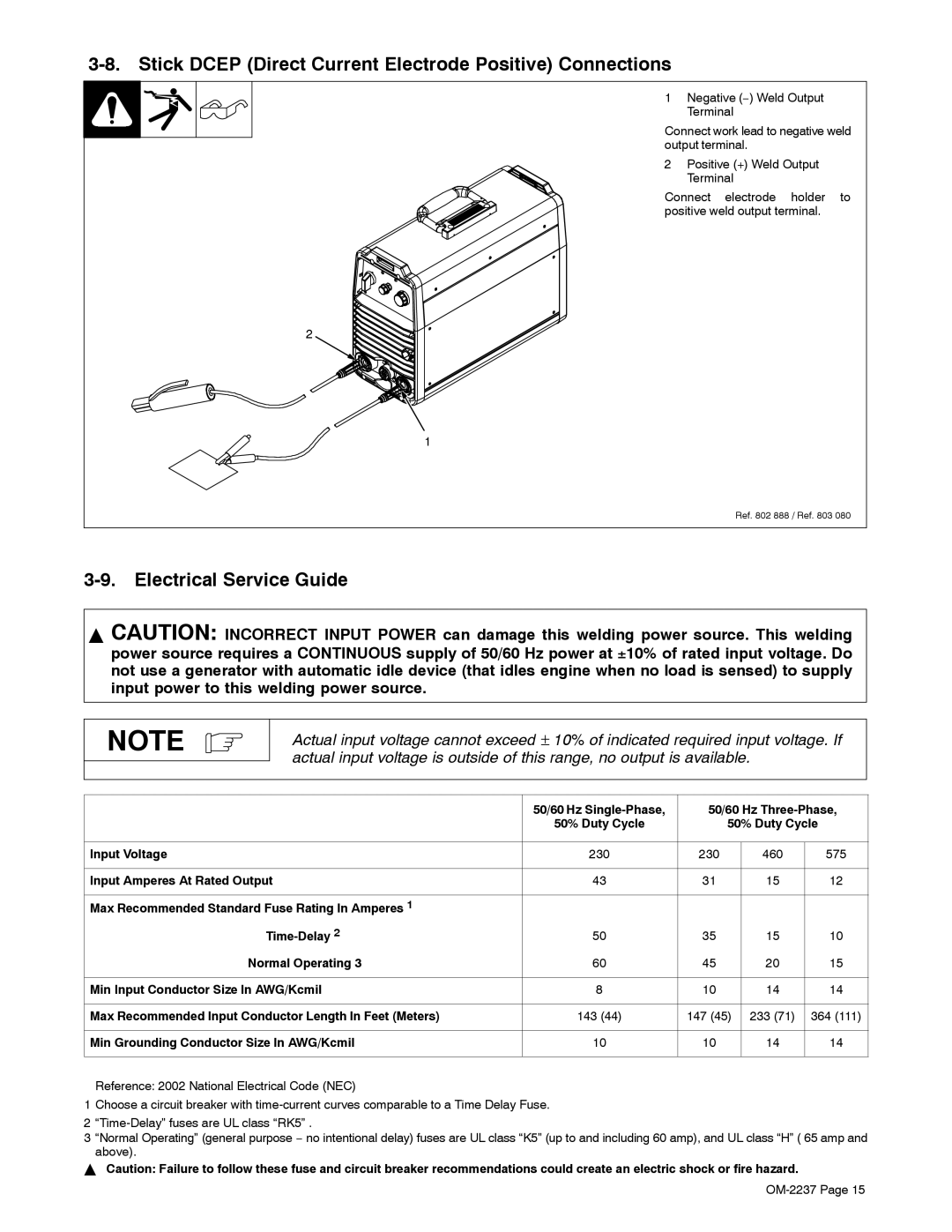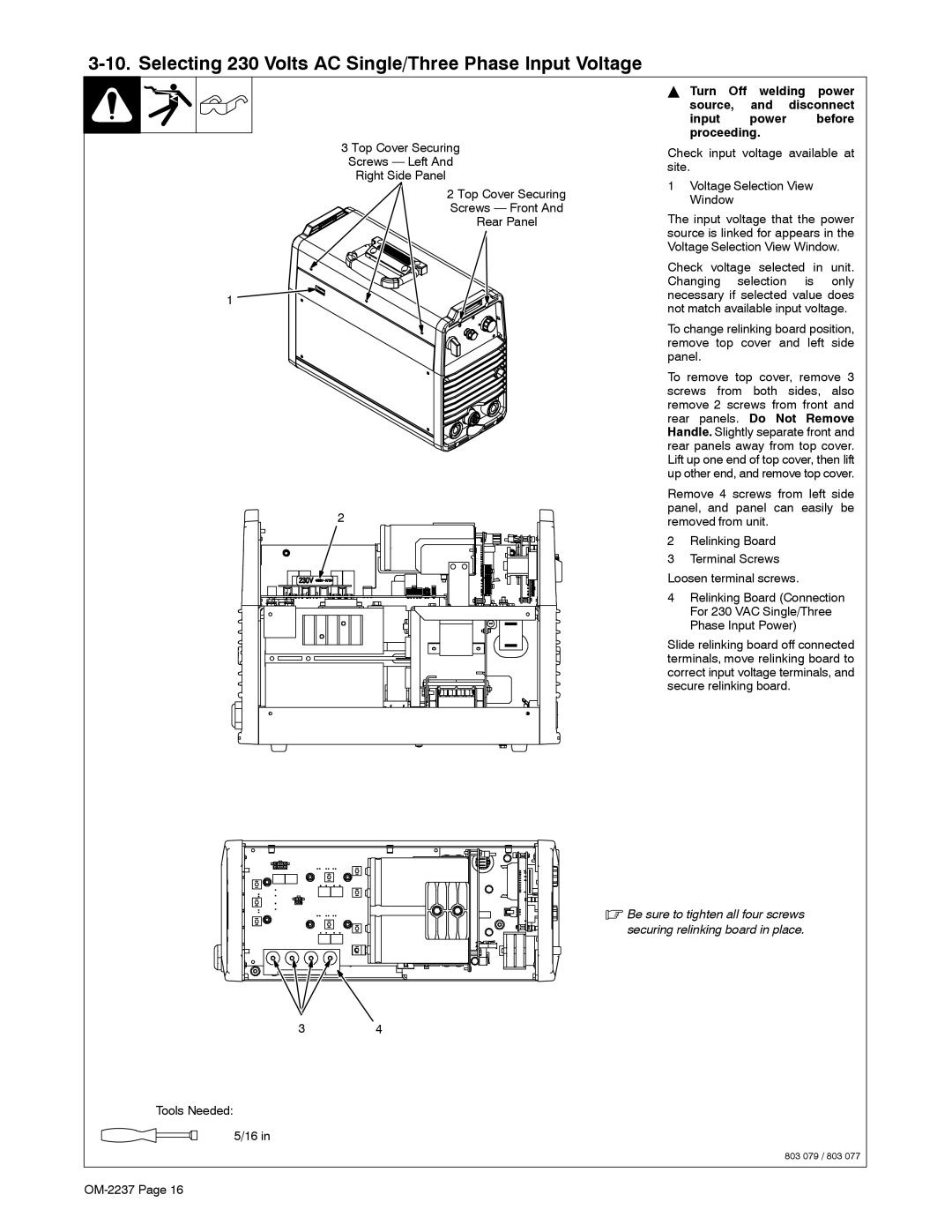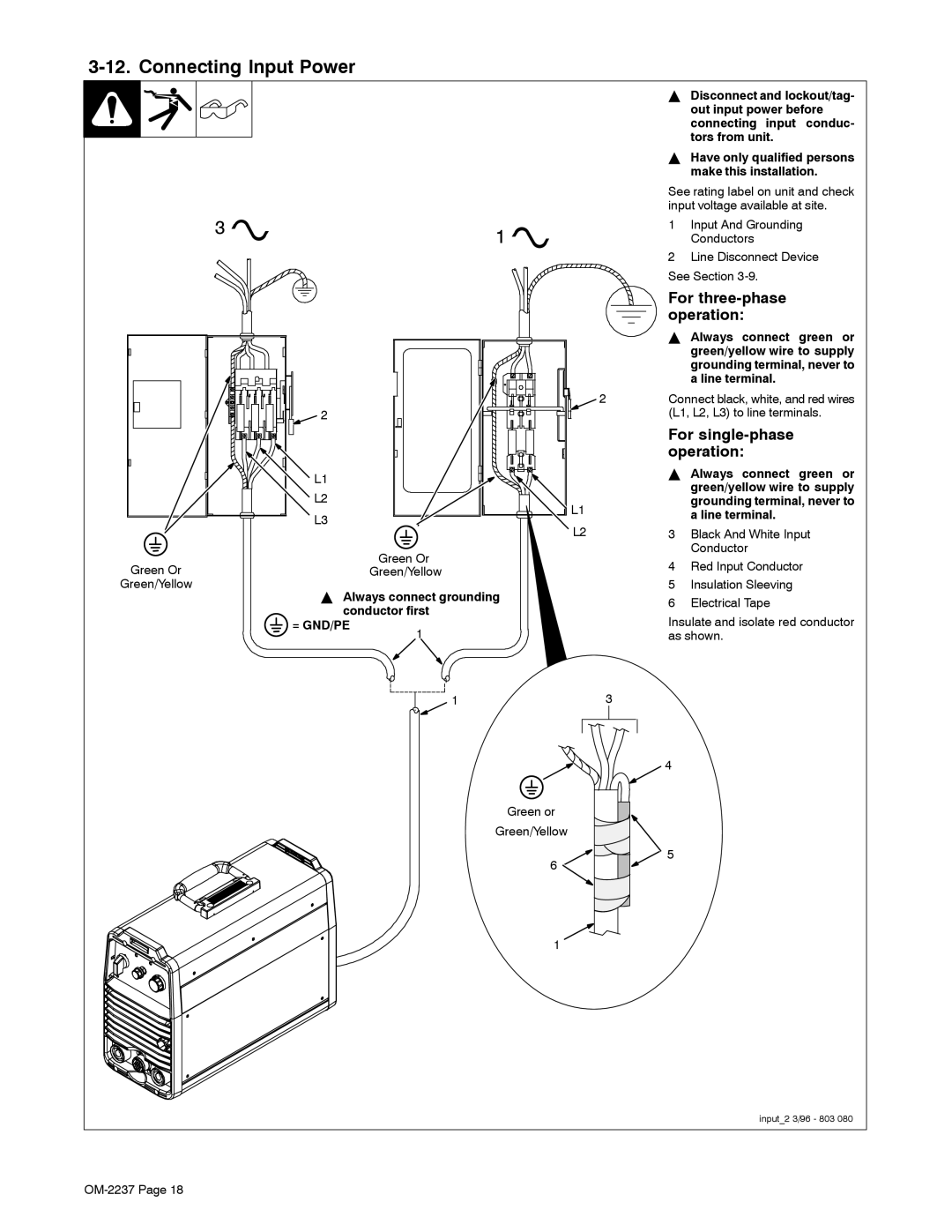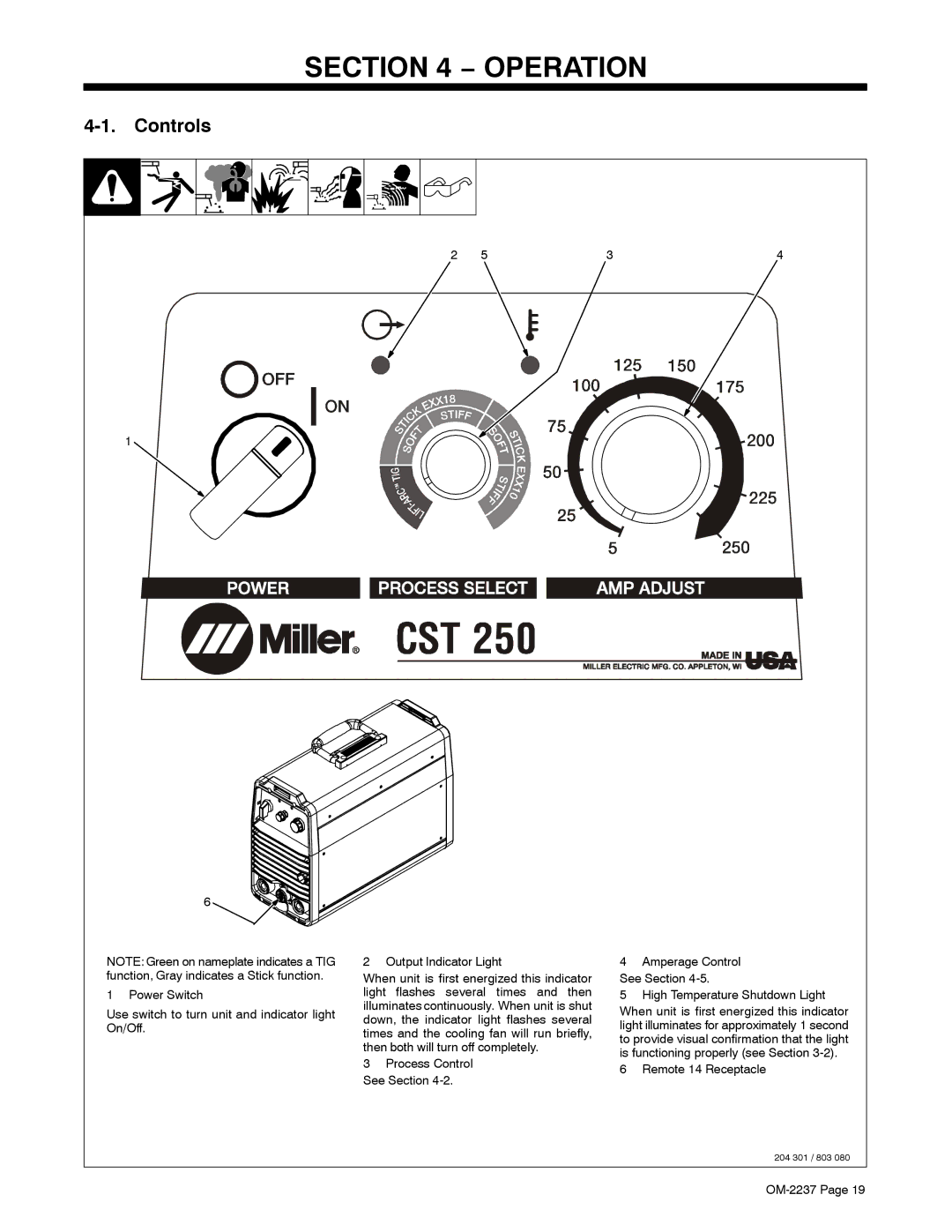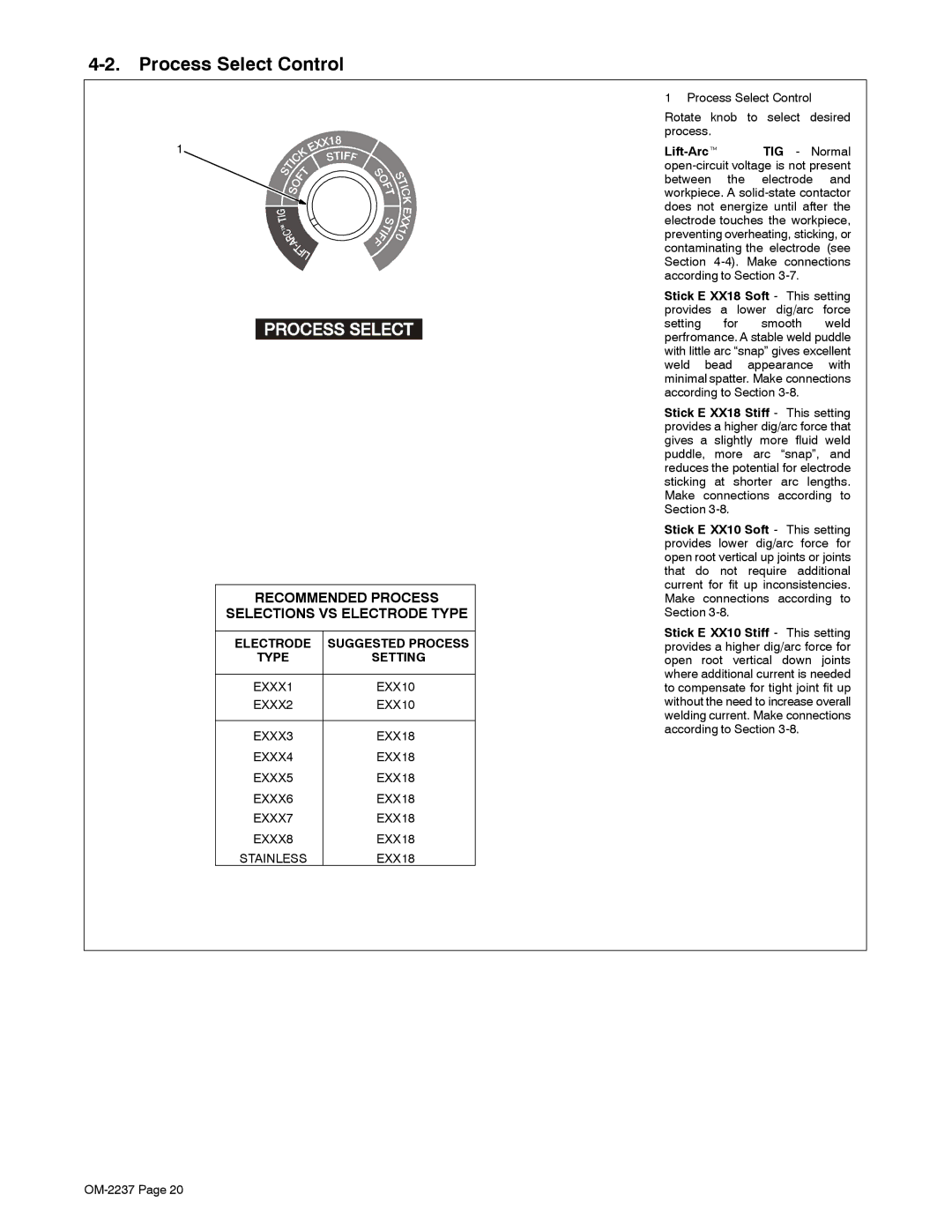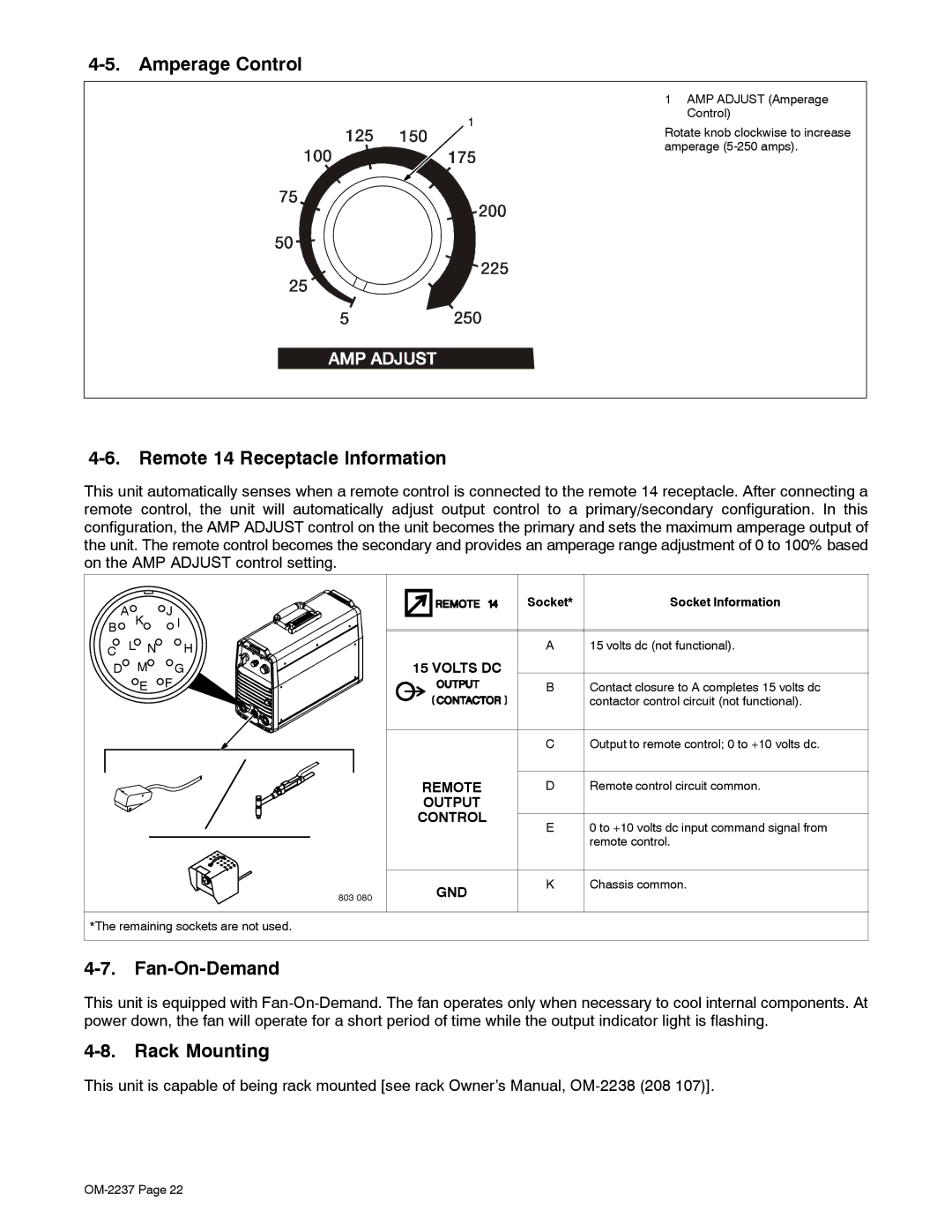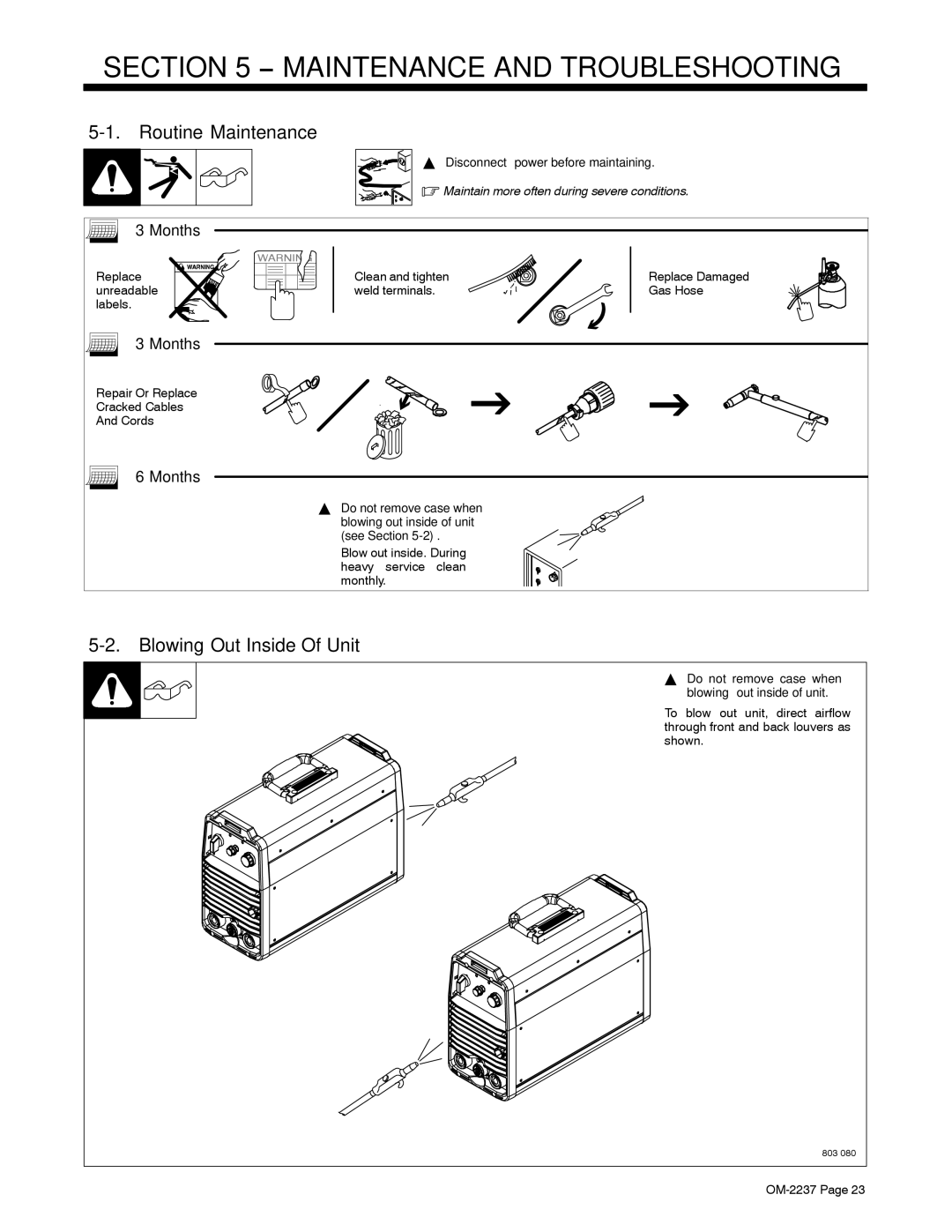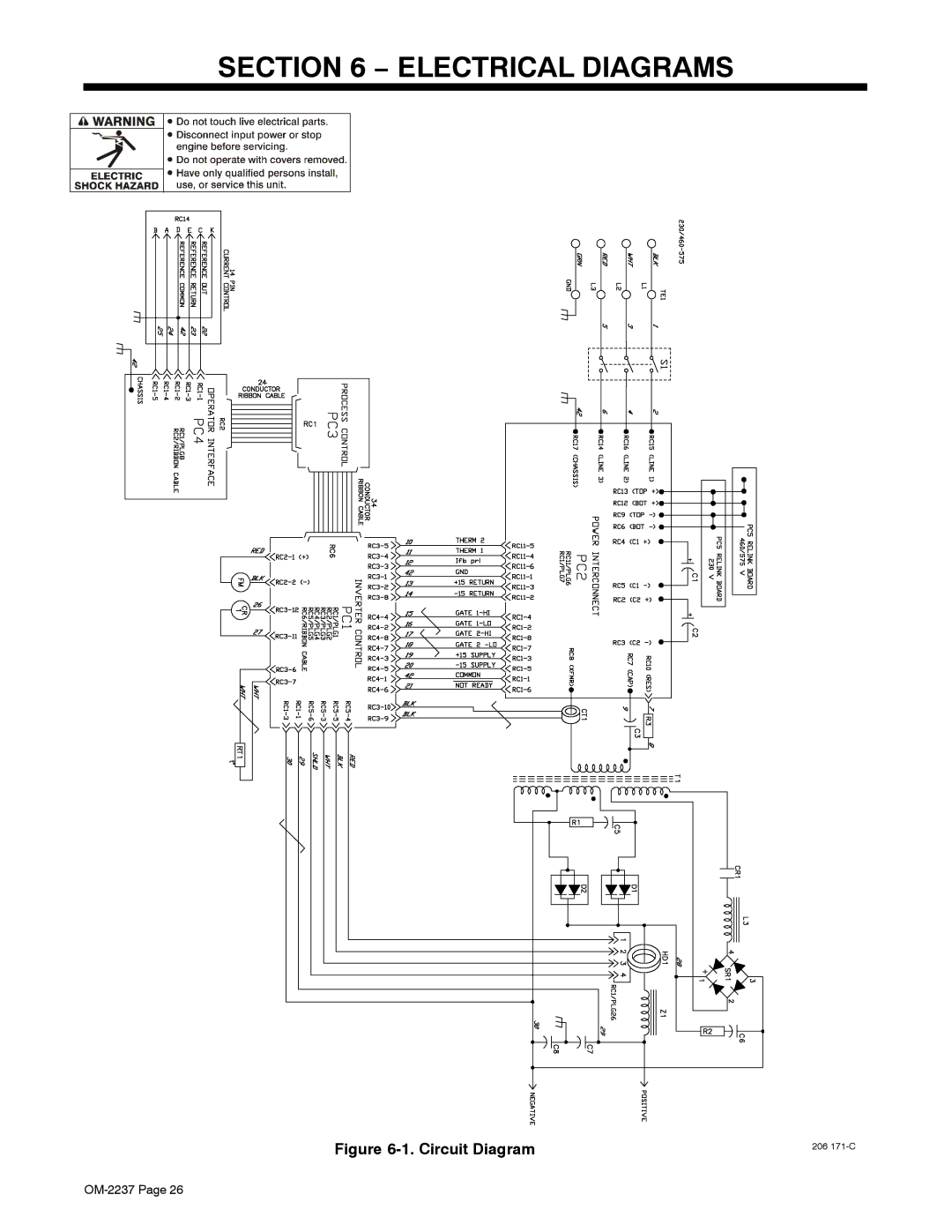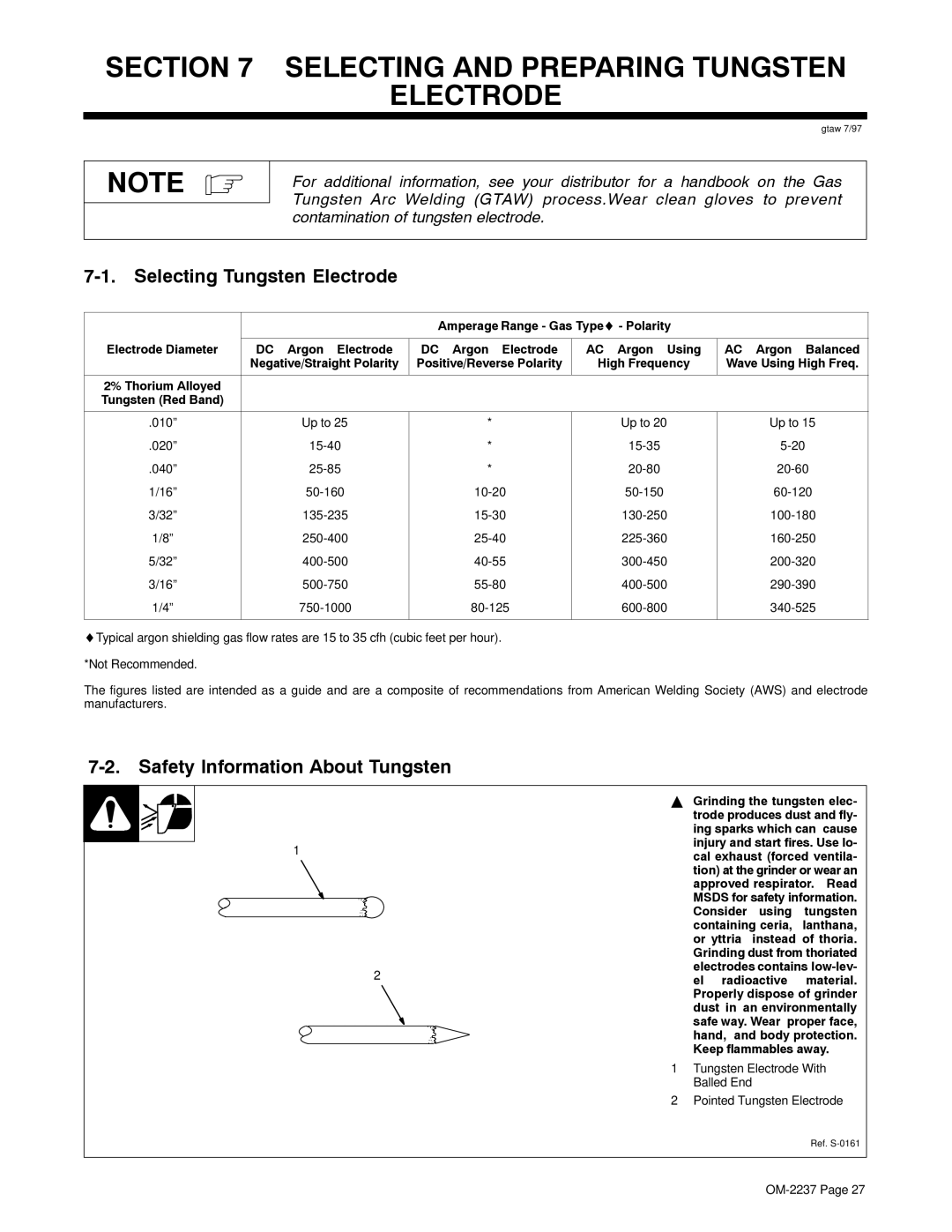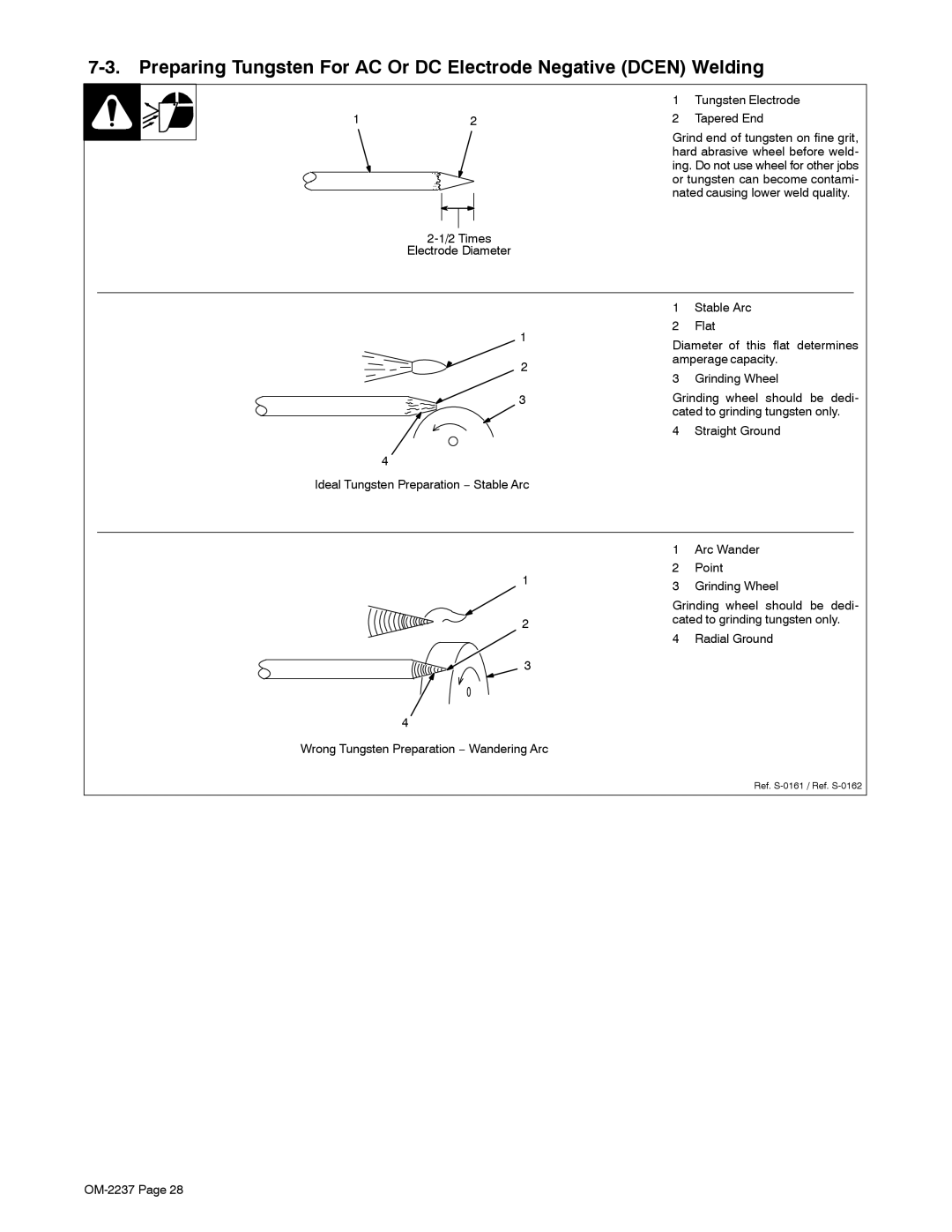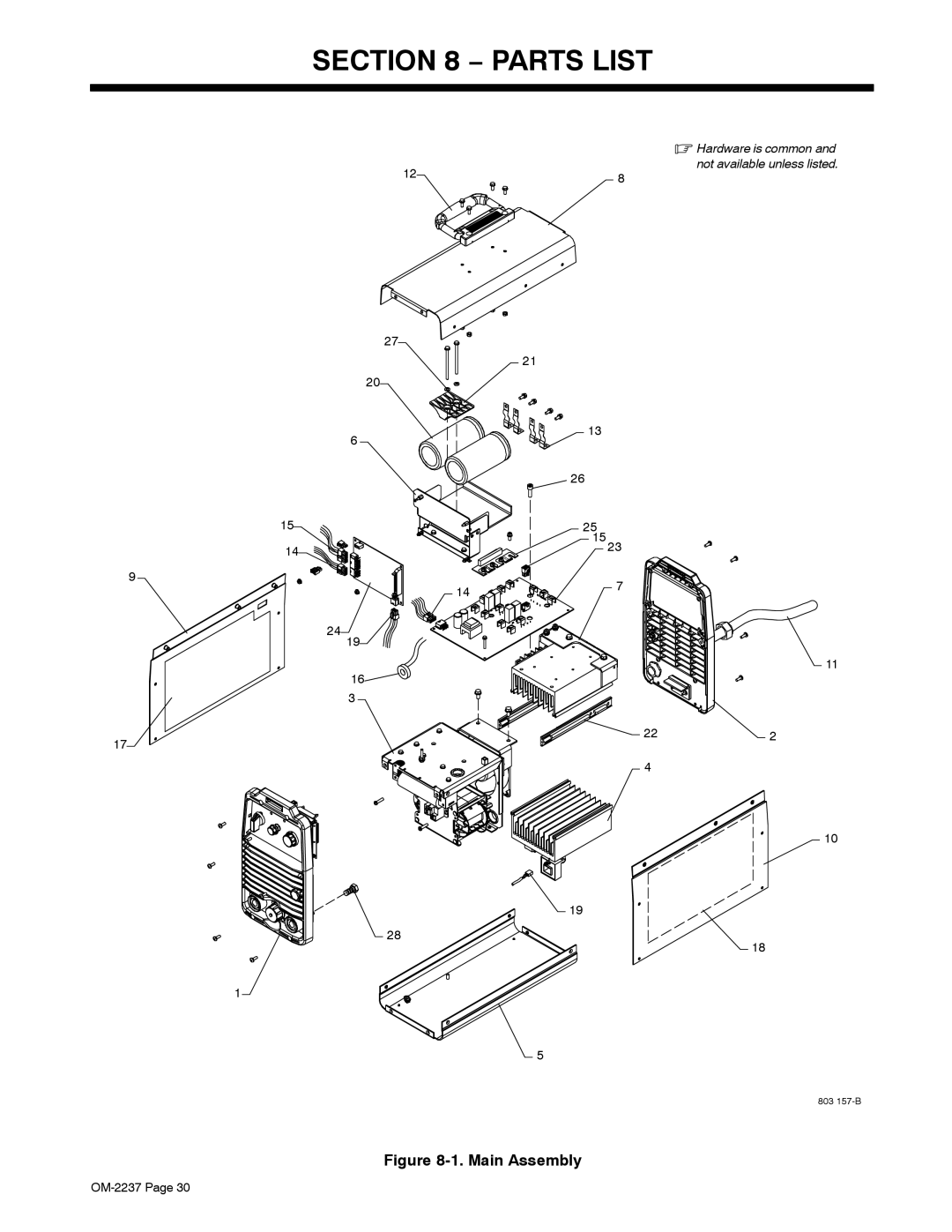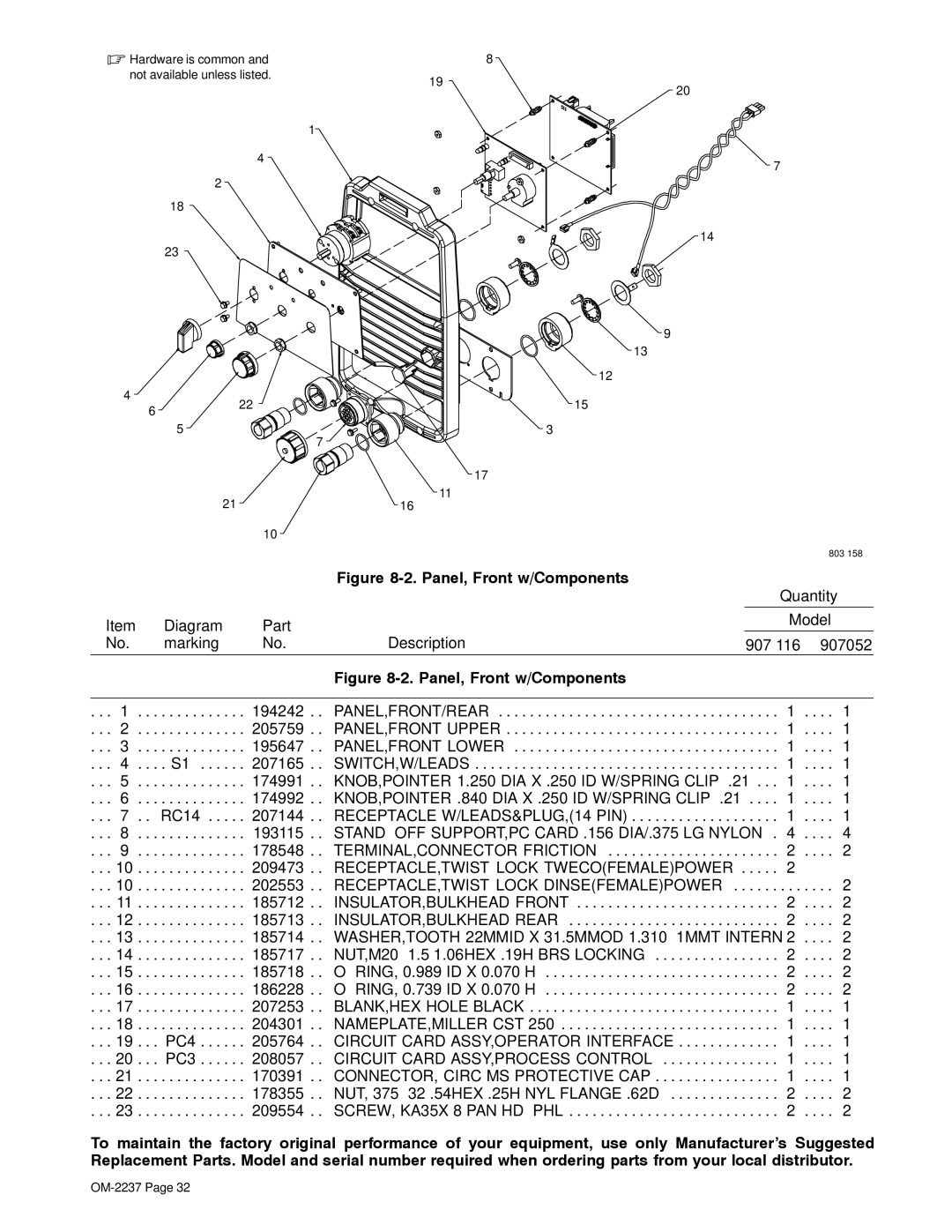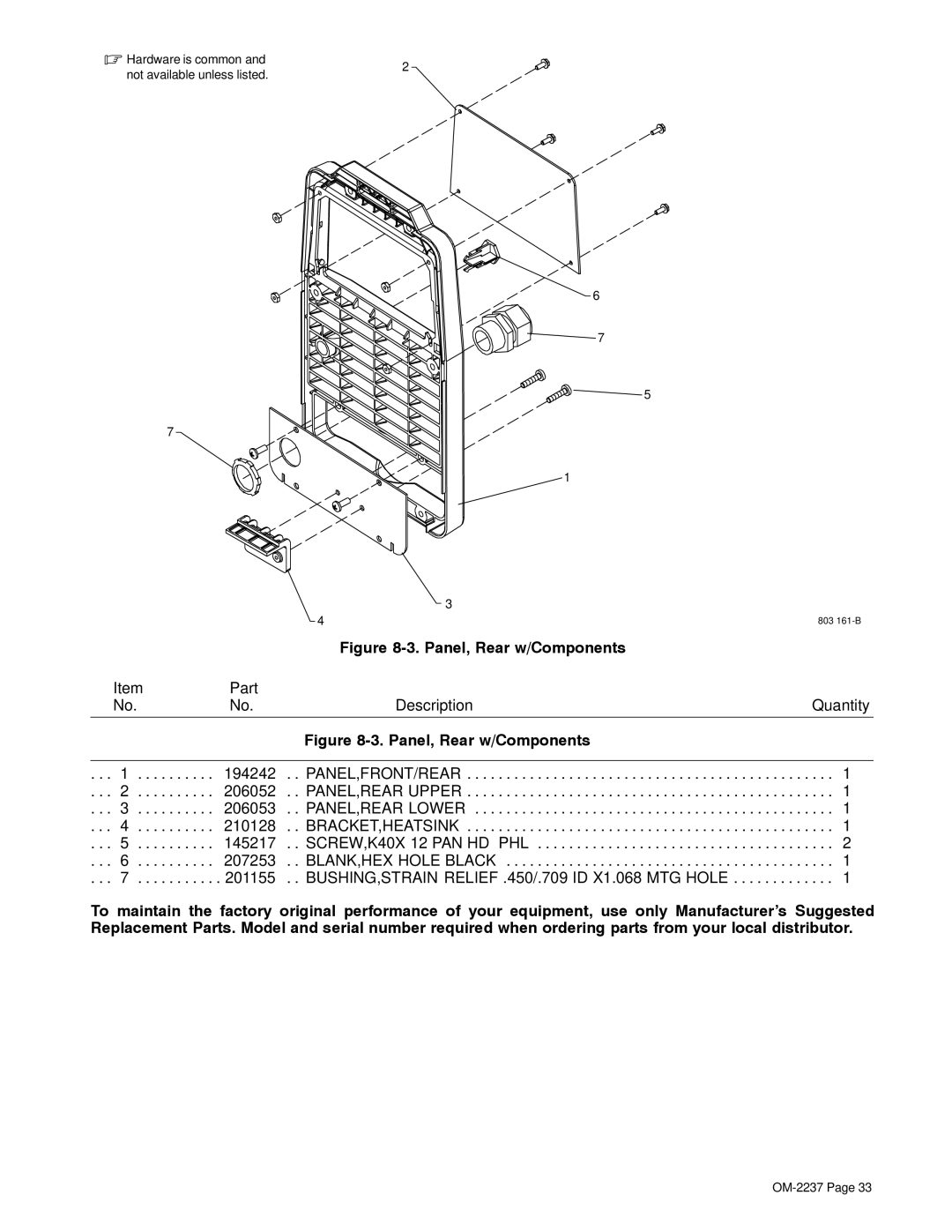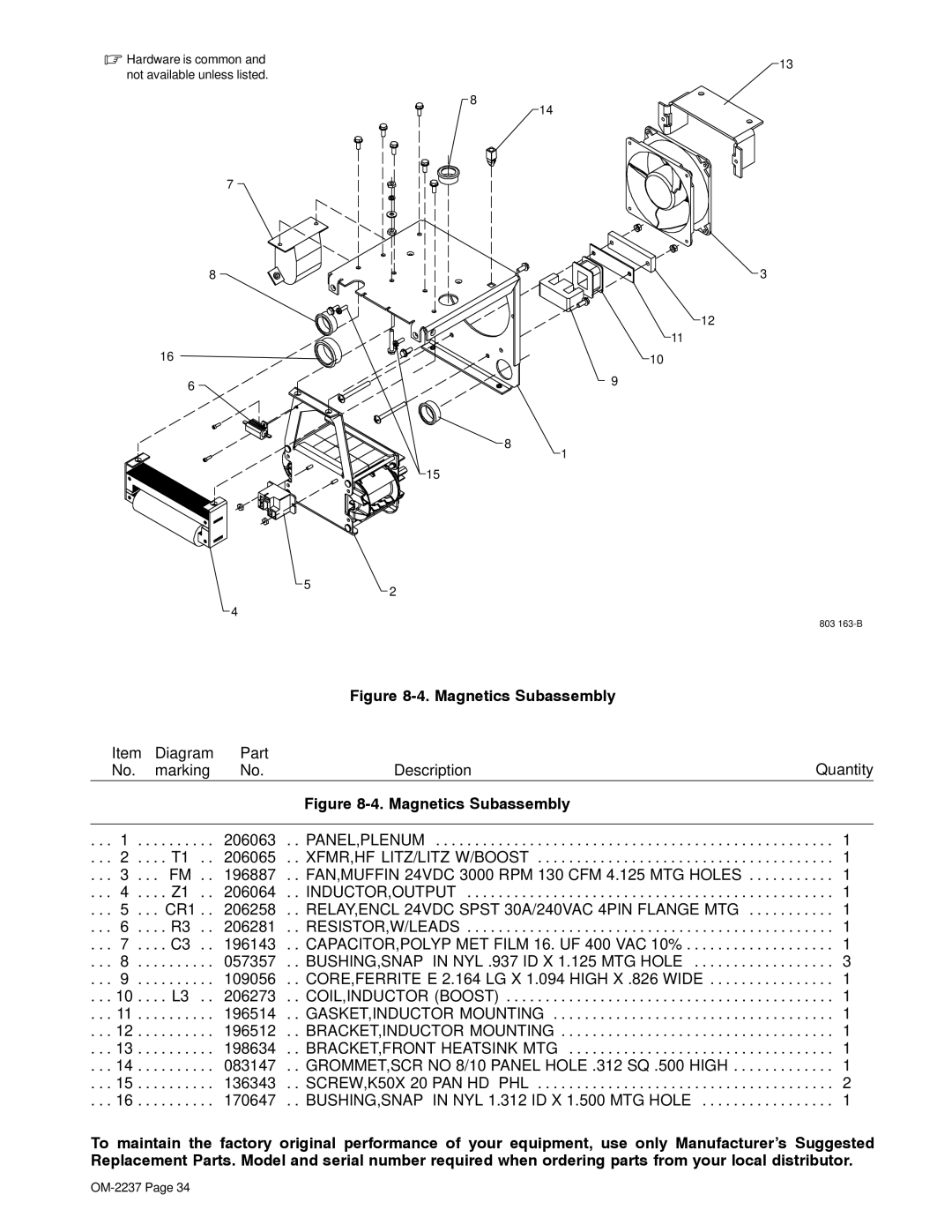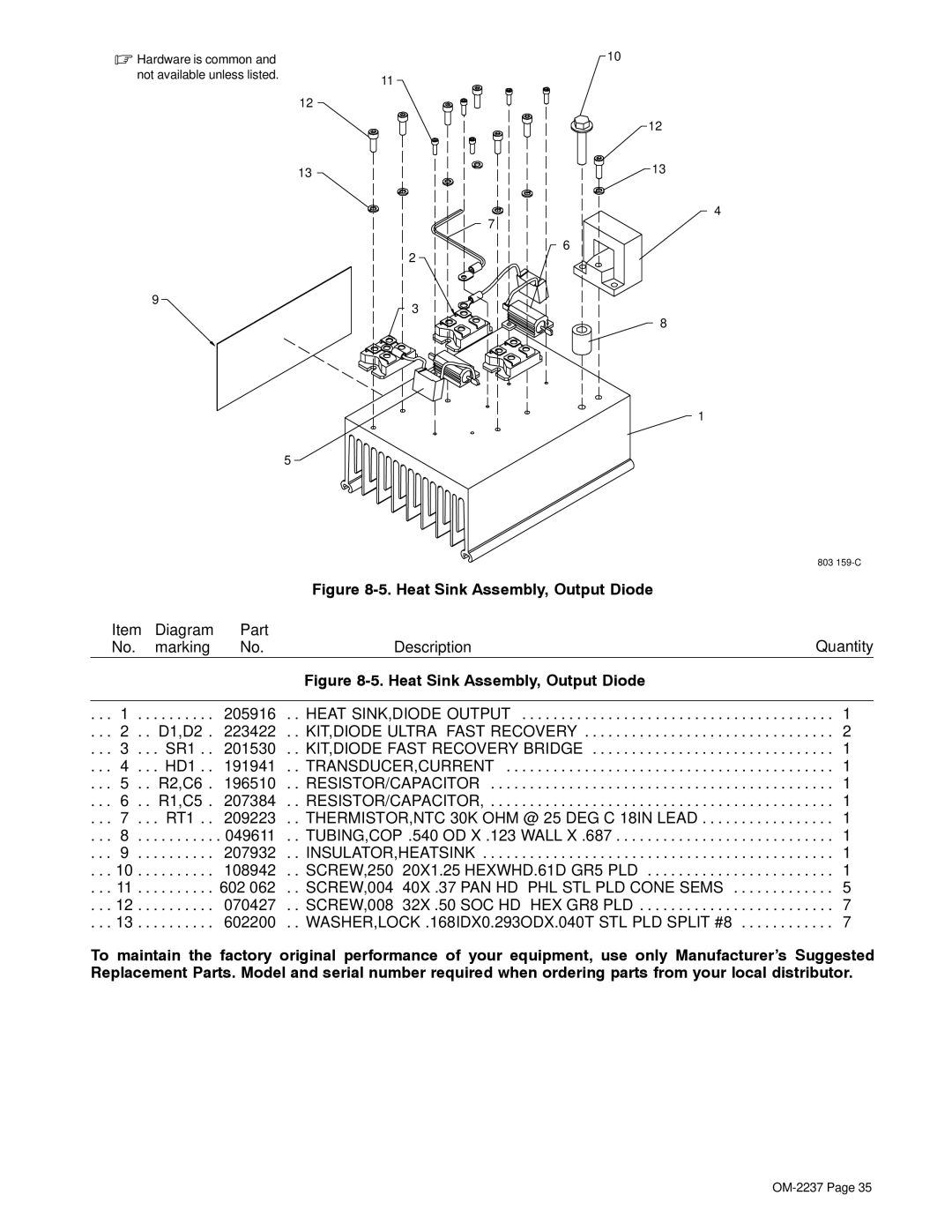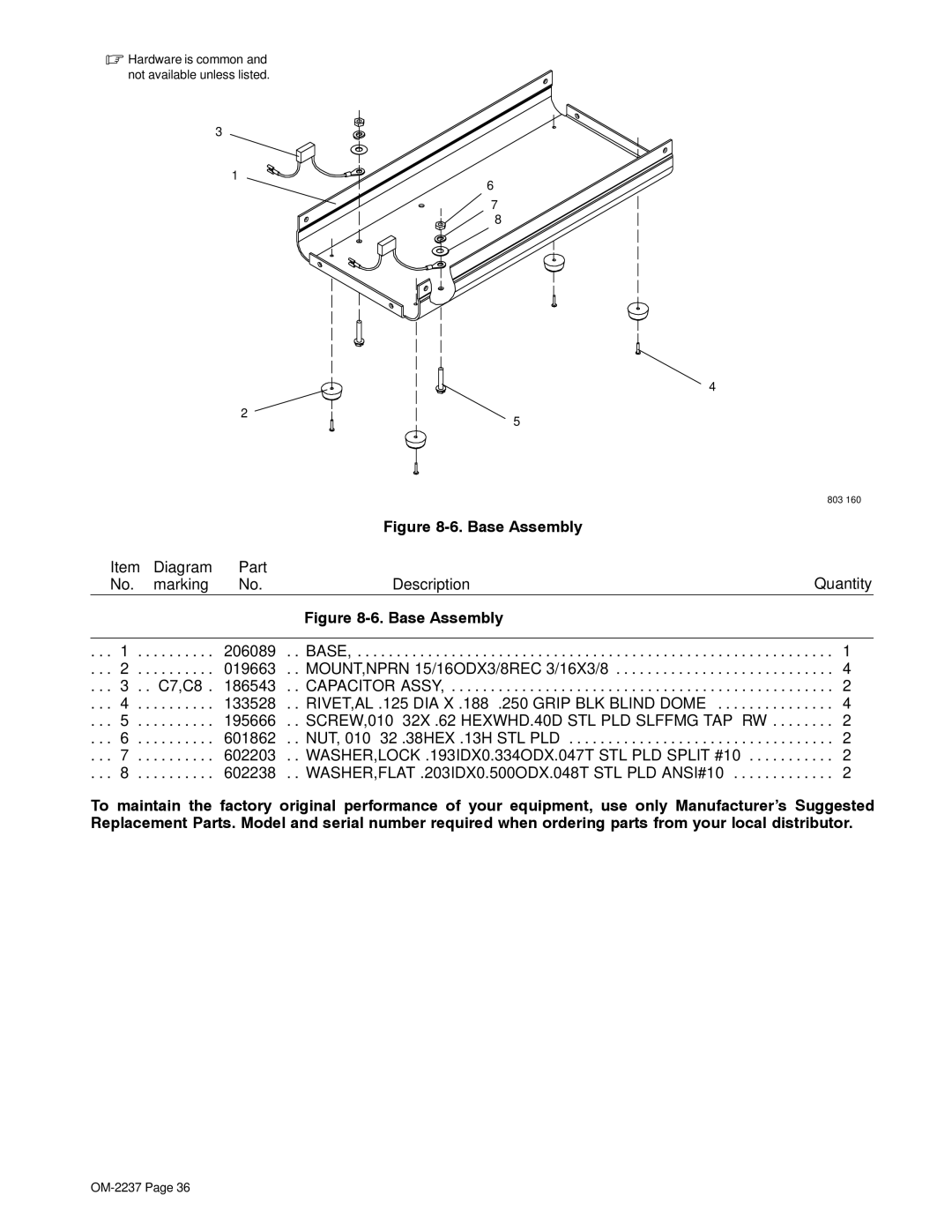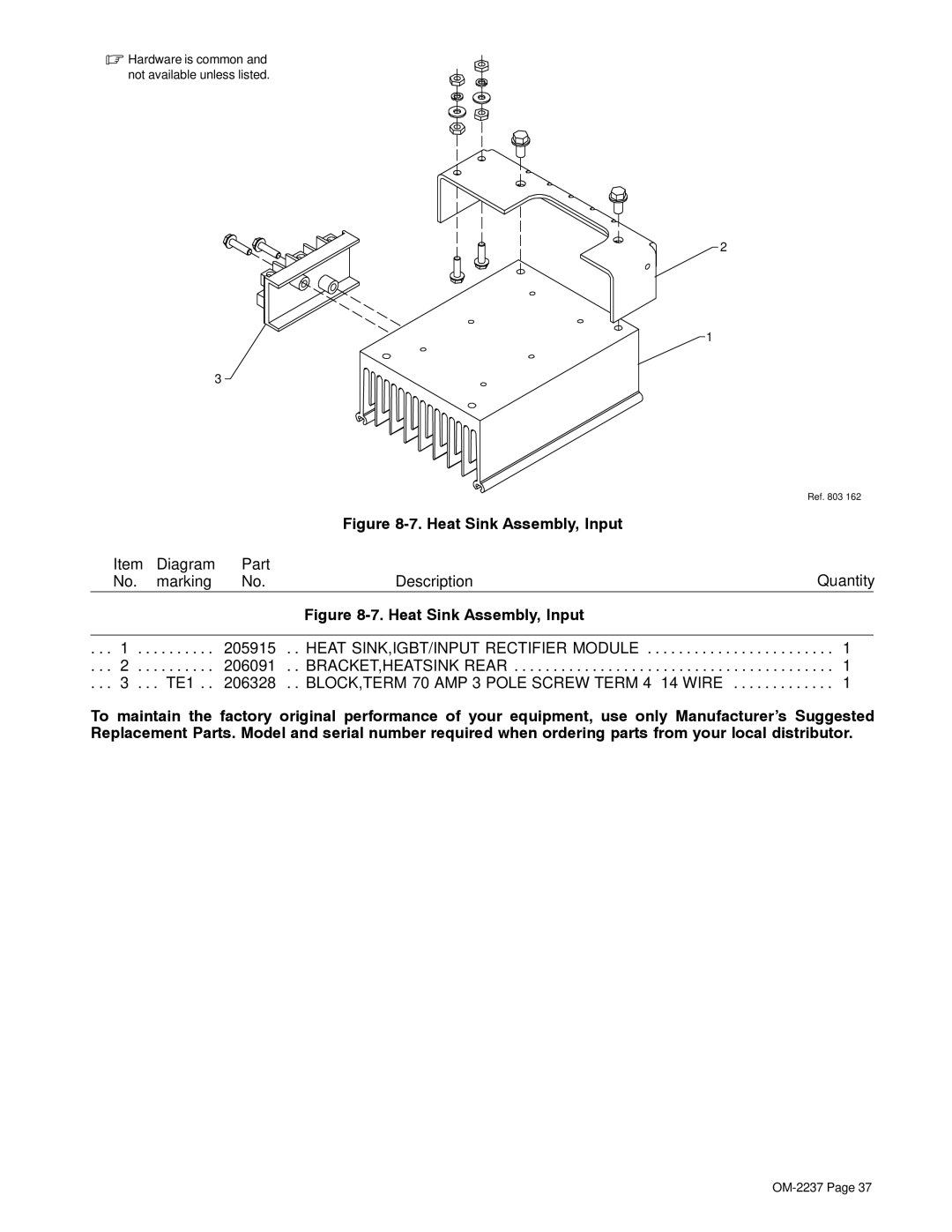
SECTION 7 − SELECTING AND PREPARING TUNGSTEN
ELECTRODE
gtaw 7/97
NOTE
For additional information, see your distributor for a handbook on the Gas Tungsten Arc Welding (GTAW) process.Wear clean gloves to prevent contamination of tungsten electrode.
7-1. Selecting Tungsten Electrode
|
| Amperage Range - Gas Type♦ - Polarity |
| |
|
|
|
|
|
Electrode Diameter | DC − Argon − Electrode | DC − Argon − Electrode | AC − Argon − Using | AC − Argon − Balanced |
| Negative/Straight Polarity | Positive/Reverse Polarity | High Frequency | Wave Using High Freq. |
|
|
|
|
|
2% Thorium Alloyed |
|
|
|
|
Tungsten (Red Band) |
|
|
|
|
|
|
|
|
|
.010” | Up to 25 | * | Up to 20 | Up to 15 |
.020” | * | |||
.040” | * | |||
1/16” | ||||
3/32” | ||||
1/8” | ||||
5/32” | ||||
3/16” | ||||
1/4” | ||||
|
|
|
|
|
♦Typical argon shielding gas flow rates are 15 to 35 cfh (cubic feet per hour).
*Not Recommended.
The figures listed are intended as a guide and are a composite of recommendations from American Welding Society (AWS) and electrode manufacturers.
7-2. Safety Information About Tungsten
Y Grinding the tungsten elec-
| trode produces dust and fly- | |||
| ing sparks which can cause | |||
1 | injury and start fires. Use lo- | |||
cal exhaust (forced ventila- | ||||
| ||||
| tion) at the grinder or wear an | |||
| approved respirator. Read | |||
| MSDS for safety information. | |||
| Consider | using | tungsten | |
| containing ceria, | lanthana, | ||
| or yttria | instead of thoria. | ||
| Grinding dust from thoriated | |||
2 | electrodes contains | |||
el radioactive | material. | |||
| ||||
| Properly dispose of grinder | |||
| dust in an environmentally | |||
| safe way. Wear proper face, | |||
| hand, and body protection. | |||
| Keep flammables away. | |||
1 | Tungsten Electrode With | |||
| Balled End |
|
| |
2 | Pointed Tungsten Electrode | |||
Ref.
